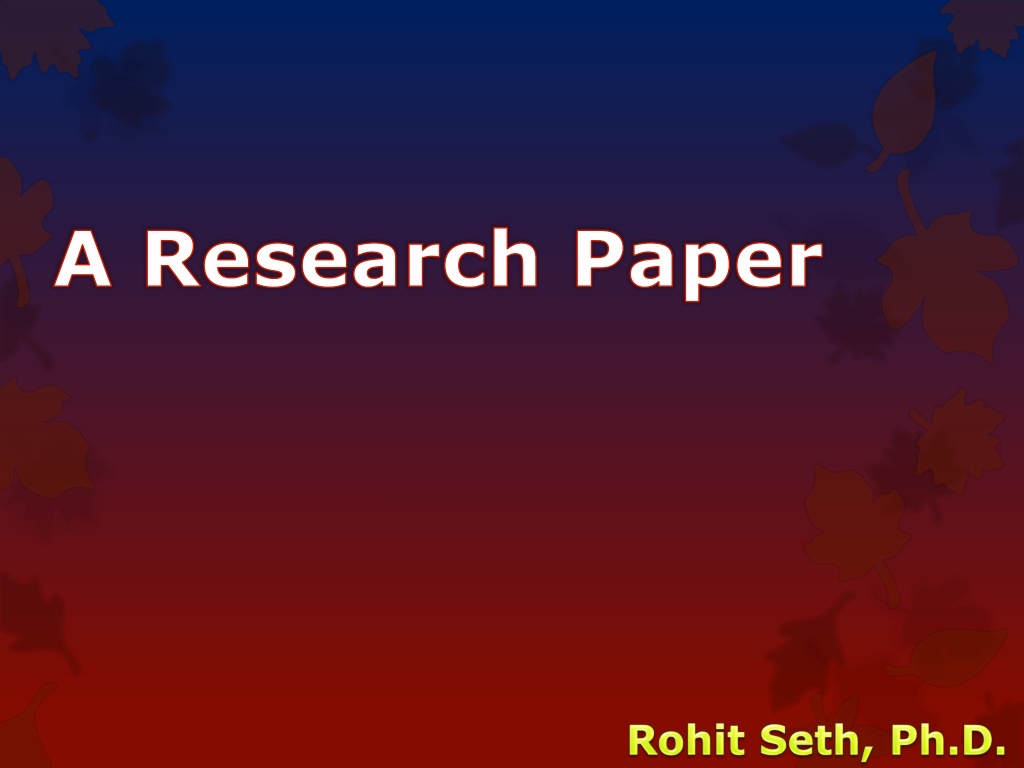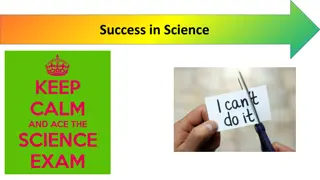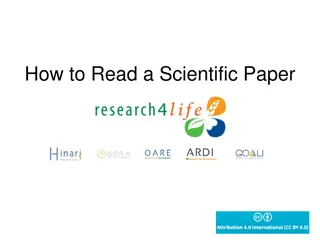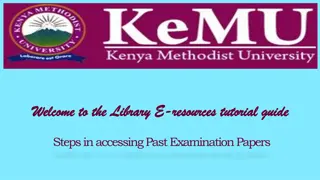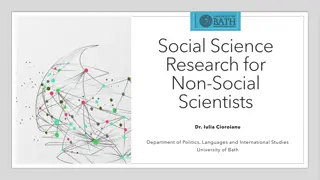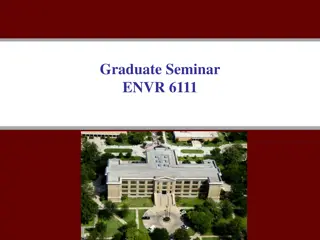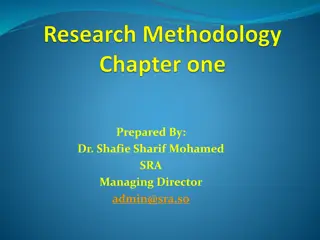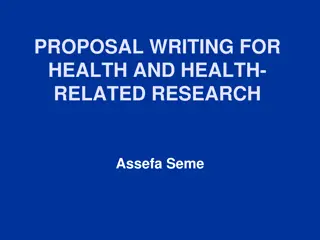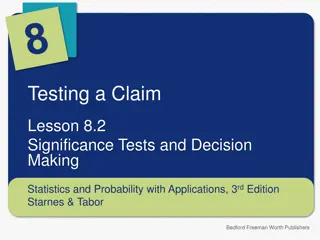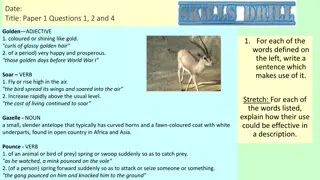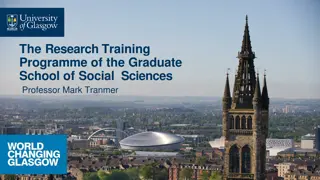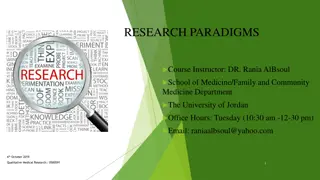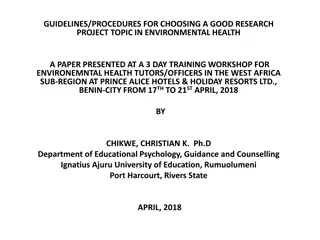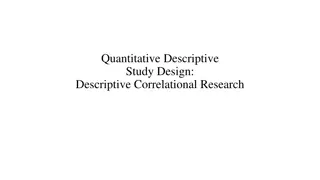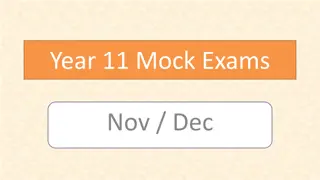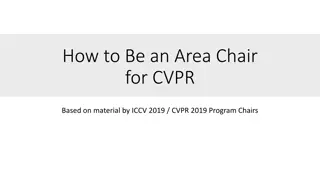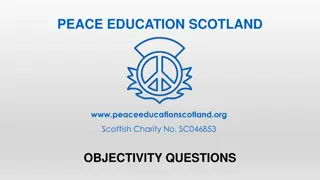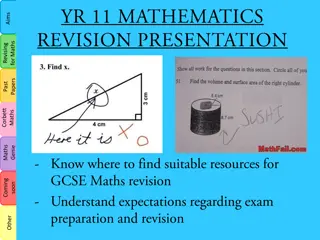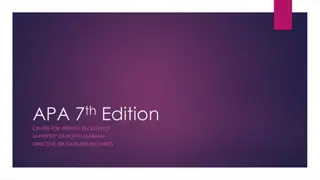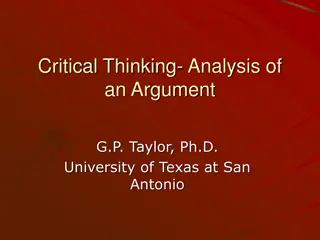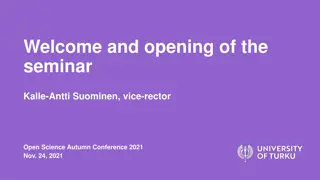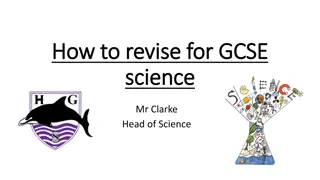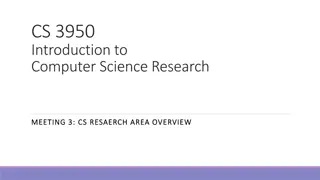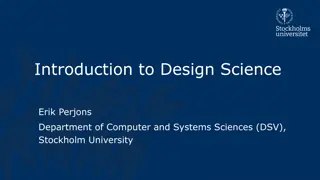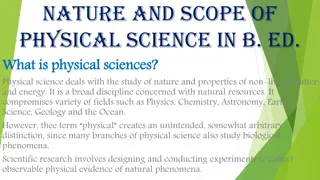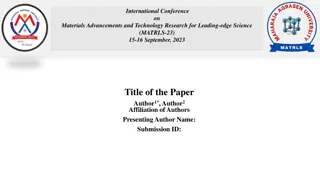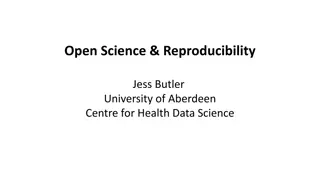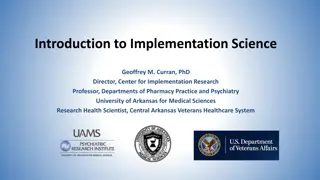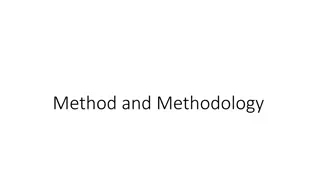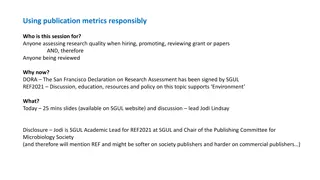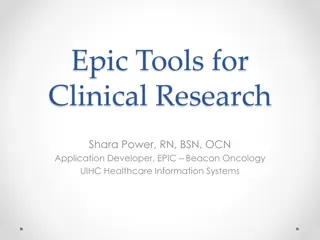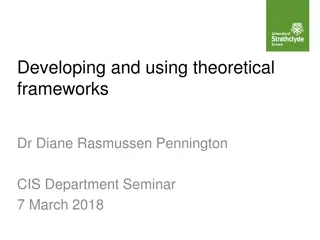Understanding Research Papers and Their Significance in Science
Research papers are essential documents in the scientific community, presenting interpretations, arguments, or evaluations of findings. They involve a thorough survey of knowledge to provide valuable insights. Discover the areas where research papers are published and the essence of science publications. Learn why reading research papers is crucial and understand how to interpret and navigate through these scholarly documents effectively.
Download Presentation

Please find below an Image/Link to download the presentation.
The content on the website is provided AS IS for your information and personal use only. It may not be sold, licensed, or shared on other websites without obtaining consent from the author. Download presentation by click this link. If you encounter any issues during the download, it is possible that the publisher has removed the file from their server.
E N D
Presentation Transcript
What is a Research Paper? Document of scientific findings. Scientific papers are the heart of the scientific community.
A research paper is an expanded essay that presents ones ones interpretation interpretation or an argument. or evaluation evaluation or When anyone write s a research paper they build upon what they know about the subject and what other experts know. A research paper involves surveying a field of knowledge in order to find the best possible information in that field.
What are the areas in which one can publish a research papers? Science Arts Humanities Religion Management Language etc.
What is the essence of a science publication? Science is Public Objective Predictive Reproducible Systematic Cumulative Publication makes this possible Final step in discovery
EXAMPLE BIOMEDICAL RESEARCH
Why should I read? To find out whether to use a (new) diagnostic test or treatment To learn clinical course and prognosis of a disease or treatment To determine etiology & causation To distinguish useful from useless (or harmful) therapy
Interpretation Body of a research paper Introduction What question was studied? Methods How was the question studied? Results What was found? Discussion What do the results mean?
Other parts of a paper Additions Title, authors, affiliations Abstract Subsections Tables & figures References Acknowledgements & disclosures Appendices Electronic supplements
How do I read a research paper?
Read a scientific paper as a critic Understand the problem Understand the proposed solution Understand competing approaches / designs Evaluate the paper Peer review is the cornerstone of the scientific publishing process
Evaluating a Paper What is the problem being solved? Is it important? Relevant? Why? What is the prior work in this area? Is the proposed solution clever? Cleverness is orthogonal to importance! Are the assumptions and model reasonable? Impact Easier to evaluate for older papers Does other work build on it? Do other papers uses techniques and solutions proposed in this paper?
Evaluation Process Read slowly, take notes as you read Question assumptions, importance of the problem Write questions to track what you don t understand Sometimes what is not in the paper is more important than what is in it Is there something the authors have overlooked? Don t let ideas or design details pass until you understand them! Do not assume the paper is correct, even if published in a prestigious peer-reviewed venue
Ground Rules Try to understand Don t be afraid to ask Be constructive Be polite Don t be afraid to criticize (constructively!)
Two Types of Scientific Papers Containing Two Types of Information Review articles: give an overview of the scientific field or topic by summarizing the data and conclusions from many studies. Primary research articles: contain the original data and conclusions of the researchers who were involved in the experiments and how the experiments were done.
First read the abstract in order to understand the major points of the work. It clarifies whether you in fact know enough background to appreciate the paper. It refreshes your memory about the topic. It helps you as the reader to integrate the new information.
Continue Continue Introduction can be skimmed. The logical flow of papers goes straight from the Introduction to Results. Then to Discussion for interpretation of the findings. This is only easy to do if the paper is organized properly.
How to read the results How to read the results Examine the figure take notes with each experiment/ figure you should be able to explain: The basic procedure the question it sought to answer The results the conclusion & Criticism
How to read a discussion How to read a discussion Take notes and answer these questions: What conclusions did the authors draw? Opinion/ interpretation? Ask yourself why is this data significant? Does it contribute to knowledge or correct errors?
By now, you may be tired of this paper But don t relax yet save energy for the overall reflection and criticism.
Reflection and Criticisms Reflection and Criticisms Do you agree with the authors rationale for setting up the experiments as they did? Did they perform the experiments appropriately? Were there enough experiments to support the major finding? Do you see trends/patterns in their data? Do you agree with the author s conclusions? What further questions do you have? What might you suggest they do next?
Reading a scientific paper Reading a scientific paper Struggle with the paper Active not passive reading. Use highlighter, underline text, scribble comments or questions on it, make notes. If at first you don t understand, read and re-read, spiraling in on central points. DO NOT DO NOT highlight whole highlight whole sentences or sentences or paragraphs paragraphs
The famous The famous duck duck- -rabbit ambiguous image. rabbit ambiguous image. File:Duck-Rabbit illusion.jpg When one looks at the duck-rabbit and sees a rabbit, one is not interpreting the picture as a rabbit, but rather reporting what one sees.
The Medical Writer The best preparation for writing scientific papers is to Write papers as a time and lifetime priority Respond responsibly to referees reviews of your paper Referee papers become a reviewer, editorial board member, maybe even an editor!
Doctors as Writers Write a scientific paper like you would take care of a patient having a procedure Preprocedure preparation Goals (patient care plan) Sequence of procedure Postprocedure care
Best Preparation for Writing A good protocol for study in the first place! Important question / hypothesis Clear set of objectives to answer question Analyses organized by these objectives See reporting template
Writing Order Preparation Review materials, methods, results Goals Establish paper s message & audience Select purposes tied to message Sequence Finish methods & results Discussion, introduction, references Definitive title & authors Post-writing Out to co-authors & revise Revise (seriously) after journal review
Get Down to Business! Section-by-Section Overview What to Look For
Title What is paper about?
Title Introduces the work First thing read Usually it is ONLY thing read Serves to entice intended readers
Title How do you evaluate a title? Characterize a good title
Title Characteristics of good titles Short, but specific (not an abstract!) Truly represents content Might Be provocative or controversial Ask a question Make statement of conclusion Indexable Avoid Qualifiers, jargon, abbreviations, filler
Title Evaluation Does title tell you what paper is about? Does it overstate contents? Is it too bland to entice readers? Is it too cute ? Does it mislead?
Authors Who wrote this?
Authors Why are authors important? Who should write the paper? Who should be on author list (if any)? How many? What order? What roles?
Authors Why important? Like it or not, it is an issue of authority or expertise or experience (sociology) Where was work done? Credibility Generalizability Assists evaluating apparent negative results
Authors Controversies Who should be an author? Number of authors Author order Conflicts of interest / disclosures Subject all its own
Authors Evaluation This paper suffers from lack of input, guidance, and expertise from the senior authors
Ultra-Mini Abstract What is the essence of this study the take home message?
If reader is interested Robert Day Clearly stated problem Clearly stated conclusion Steven Laureys Develop a central message and write everything else to support it JWK / EHB Ultramini Abstract: essence of findings for writer and reader
Ultramini Abstract For readers Scanning tool For authors (~3 hour s effort) Best preparation for writing paper the roadmap! Content Truest 1-3 sentences (~50 words) about the essence of the study its message its inferences
Ultramini Abstract Evaluation Analogous to the elevator pitch for a business It is not a summary of study purpose or results It is congruent with conclusions of abstract and paper It is hard work It is often done poorly
Should I read the article? Abstract
Abstract Meeting abstract Purpose: to get on program Paper abstract Summarizes information and data contained in more complete form in IMRD aspects of manuscript States conclusions ( bottom line ) Self contained #2 item read (after title)
In fact For most readers reading selectively and strategically Skim first line to understand problem addressed Skim last line for conclusions No sense Concluding by merely again summarizing results that have already been summarized!
Abstract Evaluation If not structured, read it in structured fashion Are purposes clearly stated? Do conclusions match 1:1 the purposes of study Do methods clearly tell me the study group (e.g. animals, patients)? Is there supporting data for each stated purpose & conclusion?
Introduction What I like What I hate What should it accomplish?
